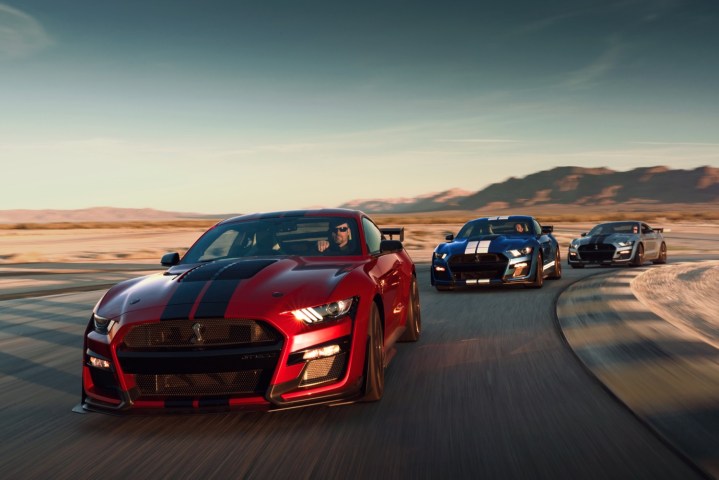
The 2020 Ford Shelby GT500 Mustang develops 760 horsepower and 625 pound-feet of torque. To harness that power, Ford chose a seven-speed, dual-clutch transmission from Tremec. Ahead of the GT500’s launch, Ford explained why it chose this transmission, and how the dual-clutch gearbox allows the GT500 to go from zero to 100 mph and back to zero again in 10.6 seconds.
Ford opted not to offer a manual transmission on the GT500, the most powerful road-legal vehicle the Detroit automaker has ever unleashed. Chevrolet and Dodge offer clutch-less transmission options for the most powerful versions of the Camaro and Challenger, respectively, but they are conventional torque-converter automatics. Those transmissions are less complicated than dual-clutch gearboxes, which are used in high-end performance cars from the likes of Porsche, but Ford engineers felt a dual-clutch transmission offered a greater range of performance.
“In many ways, this is like having two transmissions in one,” Pat Morgan, Ford Performance powertrain manager, said in a statement. “On one hand, it enables performance at the outer reaches of straight-line quickness with minimal torque interruption, yet provides an incredible amount of finesse and control in track environments for maximum stability and predictability at the limits of acceleration.”
A dual-clutch transmission is exactly what it sounds like. When shifting, it uses individual clutches to disengage one gear while simultaneously engaging the next. These clutches are operated by a computer, not by the driver’s foot, as in a manual transmission. This makes for super-quick shifts: Ford claims the GT500’s transmission can upshift in 80 milliseconds in sport mode. That minimizes the delay in putting the 5.2-liter supercharged V8 engine’s power to the ground.
But speed is only part of the equation, according to Morgan. The transmission’s control system is programmed to behave differently depending on the situation, he said, emphasizing smoothness as well as speed. Rough shifts can be a weak point of dual-clutch transmissions, so we’ll have to wait for some seat time in the GT500 to see if Ford was able to pull that off.
The GT500 has five drive modes that affect transmission behavior. “Normal” mode is designed for everyday driving, while “sport” mode cuts shift times by 20 percent for more aggressive driving. “Track” and “drag” modes were designed for use on road courses and drag strips, respectively. The GT500 also features driver-selectable launch control, as well as an “always-on” feature that provides background assistance to keep the driver from roasting the tires at every stoplight. As with other versions of the Mustang, the GT500 also gets line lock, which locks to the front brakes to allow effortless burnouts.
The 2020 Ford Shelby GT500 Mustang should hit showrooms later this year. Pricing should be somewhere north of the current Shelby GT350, which starts at around $60,000.
Editors' Recommendations
- Ford Mustang Mach-E Rally kicks up some dirt
- 2020 Chevrolet Camaro vs. 2020 Ford Mustang
- Ford’s electric 1,502-hp Mustang dragster burns tires, not race fuel
- Mechanics will use Bosch’s VR tech to learn how to fix the Ford Mustang Mach-E
- Most Ford Mustang Mach-E reservation holders go for extended-range battery


